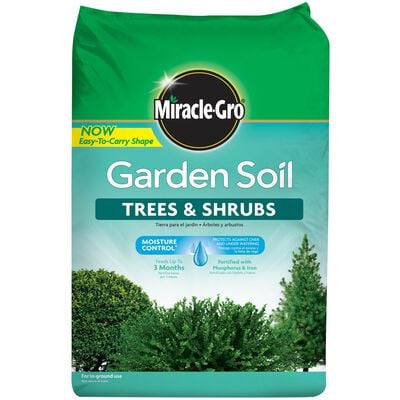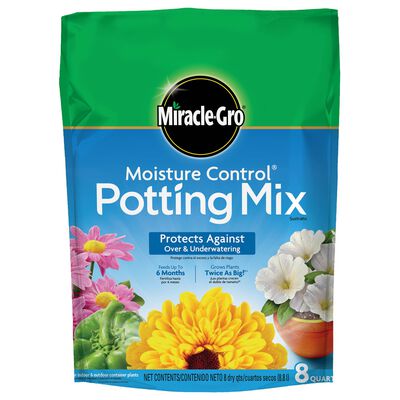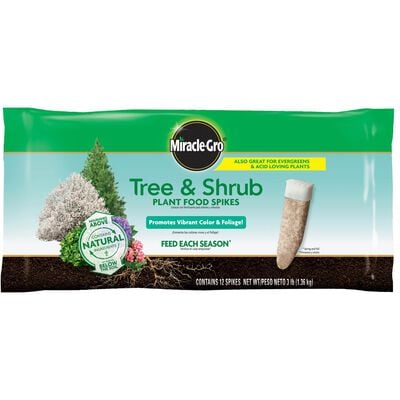
How to Grow Ferns
Who needs a ton of sun to have a beautiful yard?
- Choose ferns that will grow best in your garden conditions.
- Prepare the soil by adding Miracle-Gro® All Purpose Garden Soil to existing in-ground soil or filling pots with Miracle-Gro® Potting Mix.
- Plant ferns in full to dappled shade in the spring.
- Water plants thoroughly at the time of planting and throughout the season as needed.
- Feed plants with Miracle-Gro® Shake 'n Feed® All Purpose Plant Food (outdoors) or Miracle-Gro® Indoor Plant Food (indoors).
- Place indoor ferns in bright, indirect light and increase humidity.
- Trim off dead leaves to keep plants tidy.
Baskets of green swinging from porch ceilings are probably what most people think of when they think "ferns." Those Boston ferns are certainly beautiful (and no shady summertime sitting place is complete without them), but there's a wide world of ferns beyond Bostons. Ferns are wonderful in-ground garden and container plants because they have a lacy texture not offered by many other foliage plants. And since contrast is the spice of life, pairing ferns with solid-leafed plants such as hostas, brunneras, and coral bells instantly results in a professional-looking design, no matter how new you are to gardening. On the whole, ferns are fairly un-fussy plants, too, and everyone loves low-maintenance.
Here's how to grow beautiful ferns.
Which Ferns to Grow
Do you want to grow ferns outside or inside? That's the first question. Perennial, cold-hardy ferns are best grown outdoors. Tender, tropical or heat-loving ferns, on the other hand, are fine for container gardening outdoors during the summer, but have to be brought indoors for the winter. Here are some top picks for both types:
Hardy Ferns for Outdoors
- Maidenhair fern (certain species)
- Autumn fern
- Shield fern
- Ostrich fern
- Holly fern
- Shield fern
- Japanese painted fern
- Lady fern
Tropical & Indoor Ferns
- Bird's nest fern
- Button fern
- Rabbit's foot fern
- Boston fern

Where to Plant Ferns
A lot of people think that all ferns must have deep shade and wet soil to thrive. That's a myth. While it's true that most ferns are happiest in some level of shade, there are varieties that can take some sunlight, particularly the cooler morning sun. Then there's the matter of water. Again, most ferns will grow pretty well in moist soil, but others like it on the drier side. Always read the plant tag to make sure you're planting your particular fern varieties where they will be happiest.
When to Plant Ferns
When planting evergreen perennial ferns, plant at the same time you'd plant any spring blooming perennials (such as creeping phlox or candytuft). Plant other perennial ferns outside in the spring when the fronds are starting to slowly unfurl. Tropical ferns (which tend to be annuals) can be moved outdoors whenever you plant your tomatoes.
How to Prepare the Soil for Planting Ferns in the Ground
Ferns prefer lightweight, moist, mostly well-drained soil. The best way to prepare the soil for ferns is to add Miracle-Gro® All Purpose Garden Soil to the planting area. Mix 3 inches of this nutrient-rich garden soil in with the top 6 inches of existing soil, or improve individual planting holes by blending garden soil and native soil in a 50:50 ratio. Planting ferns in pots? Fill the containers with Miracle-Gro® Potting Mix to give your ferns a great start on big, beautiful growth.
How to Plant Ferns
Before you plant, be sure to read the plant tags to see how big the ferns you're planting will actually get, and space them out according to the tag recommendation if planting in-ground. (If you don't like the look of empty space in between ferns, plant some annual flowers to liven up the look without crowding.) If planting in a container, make sure the pot is no more than twice as wide as the plant's root ball.
Now it's time to plant!
1. Dig a hole that is slightly wider and just as deep as the root ball of the fern. When planted, you want the soil level of the root ball to be just slightly above (1/2 inch or so) the soil around it.
2. Drop in a Miracle-Gro® Quick Start® Planting Tablet to get ferns off to a strong start.
3. Put the fern in the hole and fill in with additional soil around the root ball.
4. Water well.

How to Water Ferns
Since different ferns like different levels of moisture, check the plant tag to see how much of a water lover your particular variety is. Ferns that prefer drier soil generally should be watered when, if you stick your finger in the soil, it's dry up to the second knuckle. Ferns that enjoy more moist soil should be watered whenever the top inch of soil is dry. Some ferns will actually let you know they're thirsty by becoming a little dull-looking when watering is needed.
How to Feed Ferns
Feed outdoor ferns with Miracle-Gro® Shake 'n Feed® All Purpose Plant Food in the spring as new leaves are sprouting. Just shake it evenly onto the soil, work it into the top 1 to 3 inches of the soil, then water to start the feeding. The result? Stronger, more vibrant ferns (vs. unfed) that are being thoroughly nourished from roots to tips. Be sure to follow all label directions!
How Grow Ferns Indoors
Grow ferns indoors in bright, indirect light in the most humid room of the house. (A bathroom with a window is ideal.) Whatever room you choose, place ferns out of direct sunlight but somewhere they can still get light. To boost humidity around the plants, you may also want to set ferns on trays of pebbles with water that just barely reaches the bottoms of the pots. Feed indoor ferns with Miracle-Gro® Indoor Plant Food (again, read the label), which is a cinch to apply and immediately gives your plants all the nutrition they need.
How to Prune Ferns
Should you prune ferns? Well, yes, but not the way you prune trees. Fern fronds are single leaves, and if you cut the tips off, they won't grow back. Instead, in the spring when you see what has died back during the winter, simply snip off any dead leaves where they meet the centers of the plants and you'll be good to go.
How to Prevent Problems with Ferns
Ferns have few pest problems. They're more likely to rot from overwatering than anything, so take care not to allow the soil to stay soaking wet. Sometimes deer will munch on ferns. If that happens, spray with a deer repellent, such as Tomcat® Repellents Deer Repellent Ready-to-Use, according to the instructions on the label. Change the scent every now and then so the deer don't get used to the odor.


